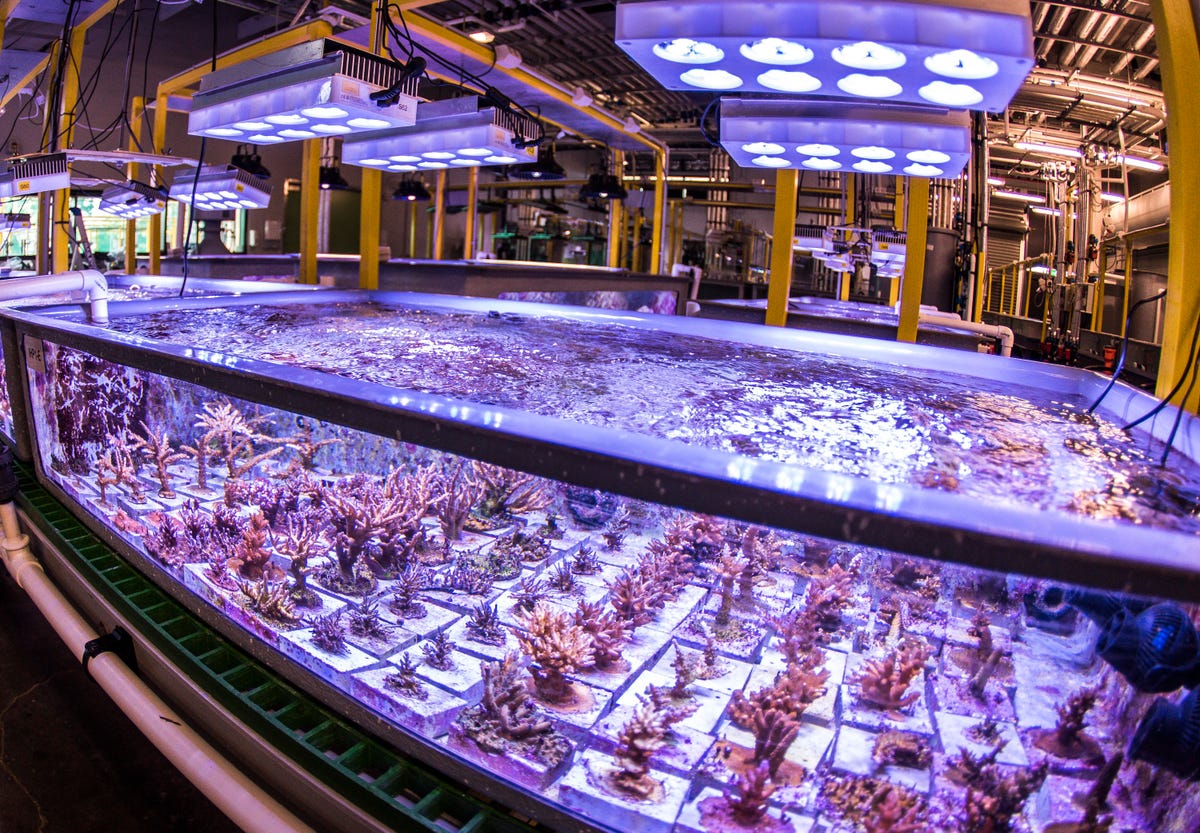Inside the Sea Simulator mimicking the Great Barrier Reef
On the east coast of Australia, scientists are using a giant artificial ocean to re-create the Great Barrier Reef, and replicate conditions expected in 2100.

Australia's National Sea Simulator
Thirty miles west of the Great Barrier Reef, researchers at the Australian Institute of Marine Science have created a carbon copy of the ocean. The Sea Simulator, in Townsville, Queensland, was created to research the effects of climate change on marine life.
Australia's National Sea Simulator
The Sea Simulator allows researchers to create entire miniature ecosystems, with multiple organisms living together, rather than keeping single species in individual tanks. The result? Conditions that more closely resemble those found on a real reef.
Mini reefs
Researchers Emmanuelle Botte and Nicole Webster observe conditions in one of the SeaSim's tanks. Webster says the facility allows her team to create "mini reefs" of organisms, all living together.
The colour and the shape
Each tank at the SeaSim can be perfectly calibrated to mimic real ocean conditions, from temperatures (adjustable down to 0.1 degrees Celsius), pH levels and even variations in sunlight re-created with LED lighting.
Australia's National Sea Simulator
The SeaSim lets researchers re-create the reef as it's expected to look in the year 2100 to find out how organisms will respond to future climate conditions.
Experiments in progress
Up to 3 million litres of seawater are pumped through the SeaSim's pipes every day. The water is filtered down to 0.04 microns and directed to as many as 48 tanks.
Perfect control
Here, two different tanks have been calibrated to represent different water temperatures and pH levels.
Coral farm
Corals are grown in controlled conditions at the Sea Simulator, with smaller specimens started off in coral nurseries.
The full life cycle
Thanks to the perfectly controlled conditions at the SeaSim, researchers can hold and measure corals for an extended period of time.
All grown up
As corals grow, researchers can test how they respond to changed conditions.
Artificial sunlight
A reef "mesocosm" is an ecosystem that mimics the diversity found in nature, but inside a lab.
A hyper-realistic aquarium
It's not just coral being kept in the SeaSim. Researchers also measure how changing water conditions affect organisms such as fish, molluscs and anemones.
Crown-of-thorns starfish
The vicious-looking crown-of-thorns starfish is a major threat to coral on the reef. Juvenile starfish feed on algae, while adults eat the coral itself.
Clams!
Inside the tanks at the SeaSim, marine creatures like these giant clams (Tridacna squamosa) grow as they would in the ocean.
Marine life
A coral cod (Cephalopholis miniata) hides out at the SeaSim.
Inspecting marine organisms
SeaSim precinct operations manager Craig Humphrey gets his hands wet.
Australia's National Sea Simulator
Researcher Eduardo Arias during a quiet moment at the SeaSim.
Australia's National Sea Simulator
The SeaSim's Matt Kenway watches over life in the artificial reef.

